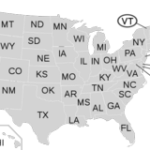Gender affects elections and the behavior of elected officials, and it does make a difference when we elect women to public office. Gender makes a difference, particularly for women, due to gender socialization, gender stereotyping and bias, and voter reaction to gender and the political environment. Women make a difference in politics because women bring different perceptions, issues, styles and agendas, to political office.
When women run for office, they win as often as men do, however, women run for office less frequently than men, due to gender socialization (lecture). This socialization occurs through parenting, school and work, and religion, and affects how females perceive their role in politics. Men and women internalize different acceptable behaviors associated with a particular gender. For example, parents tend to reinforce dependent behavior on females, and tend to brand aggressive behavior in girls as deviant (lecture). Aggressive behavior is not labeled deviant in boys, and independence is a trait typically enforced in males (lecture). Many traits associated with being male are also commonly associated with being a successful politician (lecture). In “Women, Culture, and Political Socialization”, by M. Margaret Conway, Gertrude A. Steuernagel, and David W. Ahern, in Women & Political Participation, the authors explain that women are taught from early on that politics is not their business (21).
Therefore, women learn to be more passive, uninterested, and less passionate, about politics and political activity (21). Additionally, differences in the roles of women and men affects women’s political behavior. Women are typically brought up to understand that family is their primary responsibility and this demand affects women’s political ambition and time commitments (22). In “Gender Differences in Political Attitudes, Beliefs, and Policy Preferences”, in Women & Political Participation, the authors discuss how religious beliefs also affect political orientation in women. Patriarchal authority is common in many religious doctrines and, women who have grown up within these religions are less likely to take on leadership roles and to become involved in politics (Conway, Steuernagel, and Ahern, 36). These are some of many ways that a large number of women have been socialized about their role in politics.
Although gender-socialization has a prominent impact on the involvement of women in politics, there are women who rise above the negative political influence of gender socialization. These particular women feel competent in politics, are not easily defeated nor take defeat personally, and they tend to be risk takers (lecture). These women usually had adequate resources to help them in the way of education and income and have had good political role models (lecture). These women take advantage of avenues through which women typically rise to political prominence, such as running for open seats (lecture). Despite their success in rising above the negative influences of gender socialization, these women continue to face the negative effects of gender socialization from the electorate. For example, in “The Bottleneck: Women Becoming Candidates”, by Georgia Duerst-Lahti, in Women and Elective Office, the author discusses why so few women are elected to higher office.
One reason is that, in order for women to advance to higher office, there must be more of them in lower (or local) office (pipeline theory- lecture) (15). Right now, although increasing, the pipeline has few women in it, and this phenomenon creates a barrier to women’s political advancement. Other barriers include, male politicians overtly and covertly working to keep women out of higher office, women who won’t vote for women, and voters’ inability to envision women in a high executive position (16). Another example of gender socialization within the electorate occurs with fund raising for female candidates. In, “The Gender Dynamics of Fund-Raising, Party Support, and Media Coverage”, by Richard Logan Fox, in Gender Dynamics in Congressional Elections, the author explains that women candidates receive the smallest campaign contributions from females (115). This phenomenon is due to the gender socialization of the female contributors’ (116). These reactions to women candidates are examples of how the electorate has been socialized about gender in relation to politics.
Viewing women as ineffectual in politics, can lead to gender stereotypes and bias about women. These stereotypes and biases can make campaigning and winning election more difficult for women candidates. The effects of gender stereotypes and bias will be examined in political advertising, and media coverage of female political candidates.
Women face a variety of stereotypes and bias in political advertising. In “Gender, Political Advertising and the ‘Air Wars’ “, by Leonard Williams, in Women and Elective Office, women faced a variety of gender stereotypes regarding political advertising. One prominent problem occurred with negative campaigning, in part, because it is extremely difficult for women candidates to campaign negatively (40). Additionally, women who negatively campaign “…risk being tagged as shrill, strident, vicious, unfeminine, even ‘bitchy’ “, whereas men who do the same are seen in a positive light (40). Women are also stereotyped by the “double bind” concept, which means they are automatically scrutinized for potential neglect of their family while campaigning, whereas men do not face this same scrutiny (46). It is clear that women face significant gender stereotyping and bias in political advertising.
Women candidates also face gender stereotypes and bias, in media coverage of their campaigns. In “Fundraising, Party Support, and Media”, by Richard Logan Fox, in Gender Dynamics in Congressional Elections, the media showed bias toward women simply by not covering women candidates as often as men (130). And when women candidates were covered, the media focused on their credibility more than on the issues the women supported (130). The inordinate amount of scrutiny and disinterest that women candidates received from the media, is a form of bias that can negatively affect the ability of women to get elected.
Voter bias and political atmosphere are other factors that influence the ability of women to get elected. Unfortunately, voters tend to rely on previous gender bias whether they realize it or not. Additionally, political atmosphere often changes the likelihood of a particular gender winning election.
An example of voter bias is covered in, “Voter Reaction to Women Candidates” by Elizabeth Adell Cook, in Women and Elective Office. The author discusses how some voters hold traditional ideological views that women should leave politics to men, while other voters hold a more feminist view that men and women should experience equality in politics (57). Some voters believe that a particular gender holds more preferable political qualities and will vote accordingly (58). Furthermore, voters often stereotype women as lacking certain desirable political quality (61). And, when women cannot introduce themselves to voters as well as they would like (through the media), the voters are more likely to rely on gender stereotypes when voting (62). It is apparent that voter bias plays a significant role in determining the likelihood of women being elected to office.
An example of the effects of political environment on gender is discussed in, “The Voters”, by Richard Logan Fox, in Gender Dynamics in Congressional Elections, in which the 1992/1994 Congressional elections were examined. By the time of the 1992 elections, voters were fed up with the incumbents and in the mood for a fresh approach to politics (162-163). This attitude worked well for women candidates and a “…substantial number of voters were inclined to vote for female candidates because they saw them as something new to politics” (163). However, by 1994 the electorate was disgruntled primarily with Democrats, most of who were women (163). Electoral atmosphere also affected the advertising styles of female candidates’ as discussed in, “Gender, Political Advertising and the ‘Air Wars’ “, by Leonard Williams, in Women and Elective Office. The author mentions that women candidates emphasize gender in their advertisements when electoral conditions were in favor of “female” political traits, but otherwise downplayed differences in gender (47). Political atmosphere plays an important role in how women campaign and whether they are elected to office.
Women politicians do make a difference in office because women bring different perceptions, issues, and styles and agendas, to political office. These differences impact how women campaign, the issues they address, and their leadership style, as well as how they approach policy creation. Even if women don’t make a quantifiable difference, their influence affects legislation regardless.
In “The Campaign Trail”, by Richard Logan Fox, in Gender Dynamics in Congressional Elections, the author discusses how women exhibit different campaign strategies and styles than men. Women are motivated by a stronger sense of purpose, are more personal with voters, and look more toward female voters for support (56). In “Gender, Political Advertising, and the ‘Air Wars’ “, by Leonard Williams, in Women and Elective Office, women’s political advertisements are compared to men’s. Women’s advertisements were more comparative, highlighting the negative traits of their opponents and the positive traits of themselves (43). Women candidates created more introspective advertisements based on personal experience, in order to more strongly emphasize their qualifications and political philosophy (44). Male and female candidates have obvious differences in campaign strategy.
Women also address different issues in public policy than men and, in general, have different ideologies. These differences are discussed in, “Gender Differences in Political Attitudes, Beliefs, and Policy Preferences”, by M. Margaret Conway, Gertrude A. Steuernagel, and David Ahern, in Women and Political Participation. The authors assert that women, in general, are more likely to associate themselves with the Democratic Party and to support Democratic candidates’ (37). The authors discuss how women are generally more supportive of government welfare programs, gun control, and decreased government funding for military programs (36). Women are also more likely to increase spending on social programs like: financial aid for students, aid for the poor and homeless, childcare, crime prevention, public schools, and social security (38). Women are less supportive of felons receiving the death penalty, of using force to maintain peace, and are more supportive of settling problems through negotiation (39). Women are more supportive of affirmative action and believe it protects women from discrimination, but at the same time feel the programs are not adequate and could do more (43-44). Women have distinct differences in they types of issues they commonly address.
Women exhibit different leadership styles in political institutions than men and have different ways of viewing and dealing with problems. For example, women state legislators saw themselves as harder working, willing to spend more time with constituents, and as stronger coalition builders and team players than men (lecture). Furthermore, in “Are all Women State Legislatures Alike” by Kathleen Dolan and Lynn E. Ford, in Women in Elective Office, the authors explain that women also naturally spend more time working on the passage of issues that affect women (76). Women’s leadership styles tend to emphasize consensus building and cooperation (76). In, “Are Women State Legislators Different?”, by John M. Carey, Richard G. Niemi, and Lynda W. Powell, in Women and Elective Office, the author explores how women, as leaders, view and use power. The authors discuss how women state legislators tend to favor cooperation over confrontation, and how they think of power in terms of empowering others, rather than having power over someone (90). It is mentioned in this chapter that, with more women in legislation, women could “…spur state legislatures toward more bargaining and accommodation” (90). The leadership style of women is also discussed in “The Feminization of Leadership in State Legislatures”, by Marcia Lynn Whicker and Malcolm Jewell, in Women and Elective Office. This chapter also mentions that women are more interested in creating a cooperative, consensus-building, peaceful workplace (171). Women are more likely to cite dedication to task as the primary reason they win committee leadership roles and also as a leadership style they employ as committee chairs (174-6). Females emphasize task-orientation and interpersonal skills in their leadership style, and they are more likely to describe themselves as assertive, managerial, honest, and team oriented (183). These examples express a difference in the leadership style of women candidates.
In, “In a Different Voice: Women and the Policy Process”, by Lyn Kathlene, in Women and Elective Office, the world view women hold, and how it affects their policy creation, is discussed. The author says that, in general, women are more apt to view individual needs as interrelated and they approach the world from a more contextual viewpoint than men (190). For example, women view criminals as reacting to a complex context of societal factors and will take into consideration the long social process that creates a criminal (194). Also, women will create policies differently than men because they take into account a broader range of information when making policy and they will also word policies differently than men (191-192). In, “Representing Women’s Interests in the US House of Representatives”, by Debra L. Dodson, in Women and Elective Office, women in certain committees employed specific language to stipulate certain health problems such as the words, “cervical”, “ovarian”, and “breast” in their policies (139). This use of specific language was significant because, “…it meant that agencies could be held accountable in the next appropriations cycle for activities on these medical concerns” (139). Women clearly have a different approach to creating policies than men.
Women in politics often create and enforce different agendas than men. An example is in “Women at the National Level: An Update on Roll-Call Voting Behavior”, by Janet Clark in, Women and Elective Office. The author states that women tend to place legislation dealing with children and families at the top of the agenda (118). In, “Representing Women’s Interests in the US House of Representatives”, by Debra L. Dodson, in Women and Elective Office, women felt a duty to represent women’s special concerns, most of which were related to women’s role as caregiver (131). Women in the house were also likely to target women’s health as an important issue (134). And, personal experiences of women in the House were more likely to become issues too, for example, a breast cancer survivor was more likely to make breast cancer an issue (131). Oftentimes, women raised the awareness of women’s issues in more subtle ways such as simply keeping certain issues on the agenda for a lengthy period of time (138). Another subtle influence is simply putting the pressure on getting a bill moving through the legislative process (145-146). Women have played an important role in supporting legislation that, without their influence, may have ended in defeat (143). Examples are, bills regarding abortion, the Federal Employees Health Benefit Program, and the Freedom of Clinic Access bill (143). Women obviously have the power to influence the legislative agenda differently than men.
It is certain that gender affects elections and the behavior of elected officials in many areas of politics. Gender makes a significant impact due to gender socialization, and gender stereotyping and bias. Gender issues are also influenced by voter reaction to gender as well as the political atmosphere in a given election year. Women bring different perceptions, issues, styles and agendas, to politics, therefore they make a distinct difference in office.
Bibliography
Ahern, David W., M. Margaret Conway and Gertrude A. Steuernagel. Women &
Political Participation. United States: Congressional Quarterly Inc., 1997.
Fox, Richard Logan. Gender Dynamics in Congressional Elections. New York:
The Modern Language Association of America, 1995.
Thomas, Sue and Clyde Wilcox, ed. Women and Elective Office. New York:
Oxford University Press, 1998.



